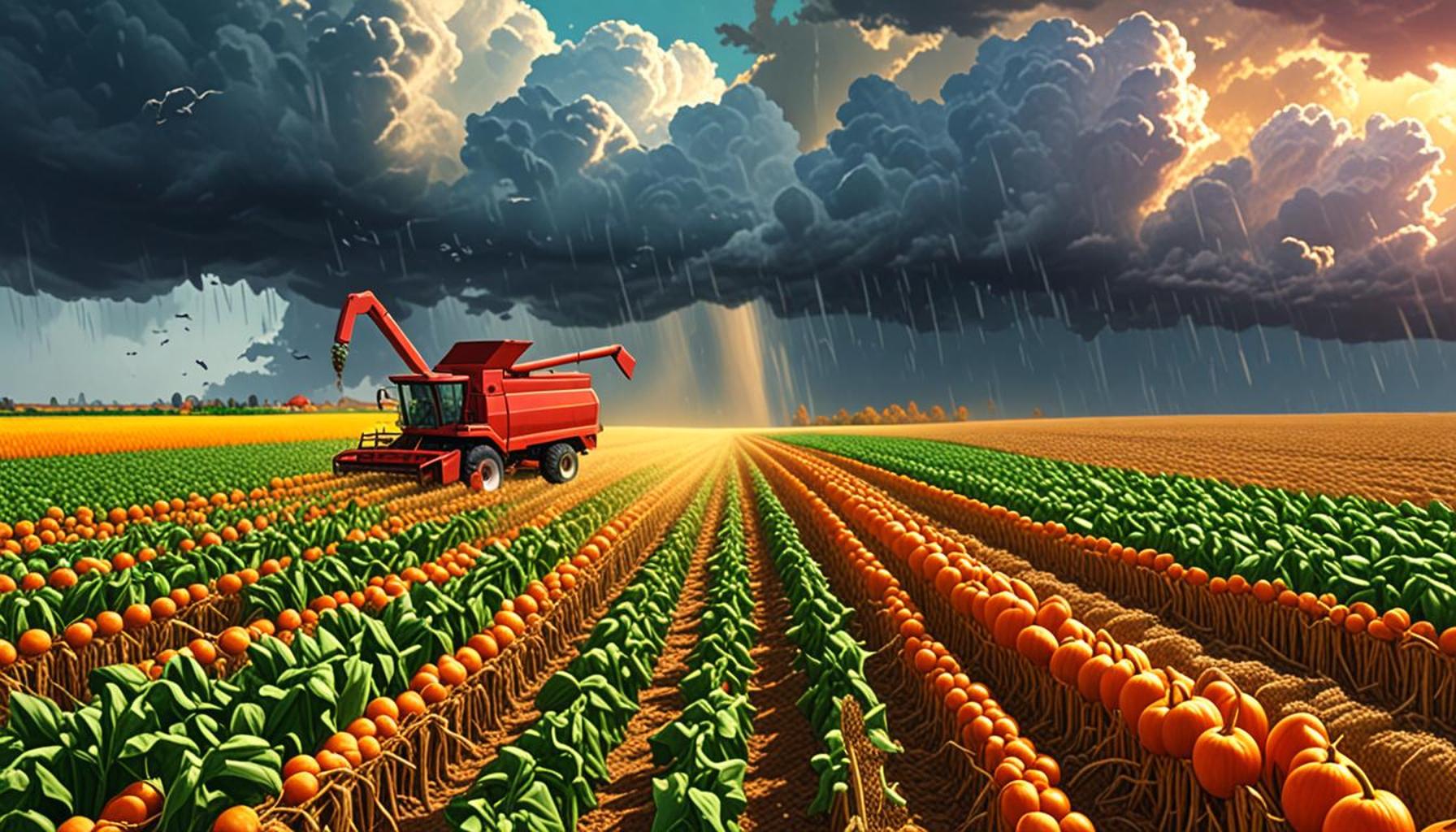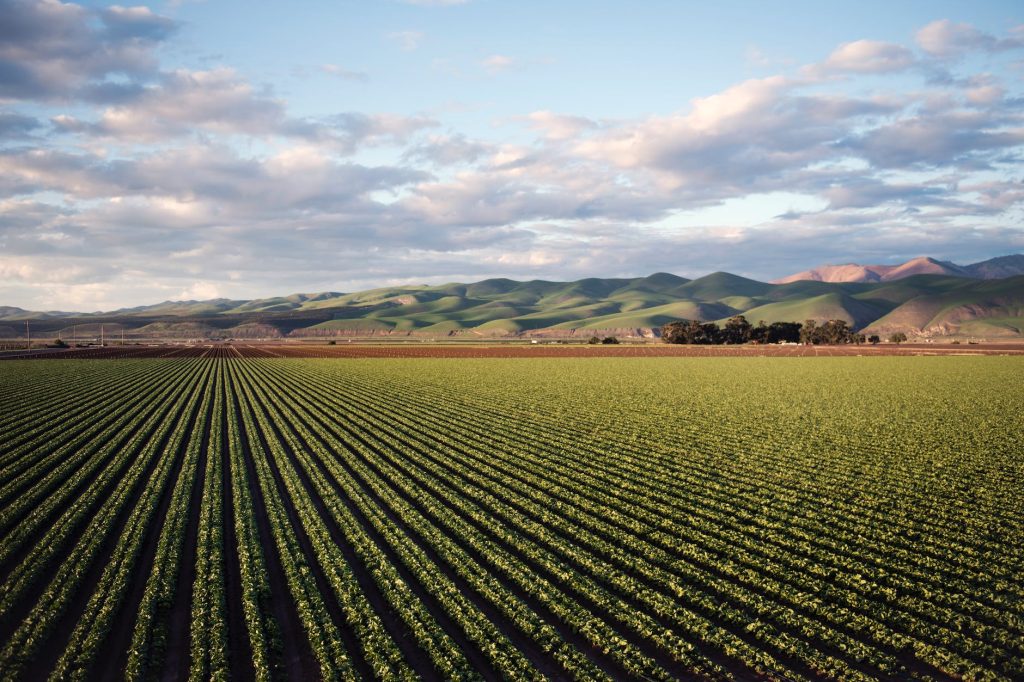The impact of climatic conditions on harvesting: How to prepare for unexpected changes

Understanding Climatic Influences on Harvesting
The unpredictability of climatic conditions poses significant challenges for farmers across the United States. From droughts that drain soil moisture to unexpected frost events that jeopardize budding crops, these environmental changes can dramatically affect both crop yields and harvesting schedules. Agricultural production is intricately linked to weather patterns, which means that any fluctuations can pose substantial risks to food security and farmers’ livelihoods. This article explores how climate variability influences agricultural operations and discusses proactive strategies farmers employ to mitigate these risks.
Key Factors Impacting Harvesting
Several climatic factors can directly influence harvesting outcomes, creating a complex interplay that farmers must navigate:
- Temperature fluctuations: Sudden changes in temperature can wreak havoc on crops. For instance, an early heatwave in spring can cause crops like corn and soybeans to mature prematurely, potentially impacting quality and yield. Conversely, a sudden cold snap can delay growth, making crops more susceptible to disease.
- Rainfall patterns: Rainfall is crucial yet unpredictable; excessive rainfall can lead to waterlogged fields that suffocate roots, while insufficient rain raises concerns of drought. Both extremes can significantly stunt development, as seen in recent years during droughts in California where farmers struggled to maintain viable yields for staple crops like almonds and grapes.
- Extreme weather events: Storms and hurricanes have become more frequent with climate change, bringing strong winds, heavy rains, and flooding that can devastate fields. The aftermath of Hurricane Harvey in 2017 serves as a stark reminder of how such events can obliterate entire crop seasons, leading to devastating financial losses for farmers.
Farmers must stay informed about these fluctuations and adopt effective strategies to safeguard their harvests. Preparation extends beyond simply monitoring weather forecasts; it necessitates strategic planning and implementation of practices aimed at enhancing resilience.
Preparing for the Unexpected
Effective preparation includes adopting a multi-faceted approach:

- Utilizing climate-resilient crops: Farmers are increasingly shifting to varieties known for their durability. For example, drought-resistant corn hybrids are gaining popularity in regions where water scarcity is a growing concern.
- Adopting advanced irrigation techniques: Implementing smart irrigation systems, such as drip irrigation, allows farmers to manage water supply more effectively and reduces waste—essential strategies during periods of water shortage.
- Engaging in community-based planning: Collaborating with neighboring farms to share resources and strategies can enhance resilience. This might involve establishing a community weather monitoring system or forming cooperative agreements to provide mutual aid during difficult times.
As climatic conditions continue to evolve, understanding their impact on harvesting is crucial for safeguarding food security and sustaining agricultural practices in the long run. The necessity for innovation and community cooperation becomes more apparent as the agricultural sector confronts the dual challenges posed by climate change and food demand. Ignoring these elements could lead to long-term consequences that not only affect farmers but ripple through entire food supply chains and communities.
DIVE DEEPER: Click here for expert tips
The Climate-Driven Tides of Agricultural Production
As climate change accelerates, farmers are forced to reckon with an array of unpredictable climatic challenges that radically transform the agricultural landscape. These fluctuations are not merely inconveniences; they represent a major shift in how farmers must approach harvesting and production. With each growing season, farmers face the possibility of altered rainfall patterns, temperature extremes, and extreme weather incidents. The implications of these factors are profound, and understanding them is essential for farmers as they strive to safeguard their crops and livelihoods.
The Ripple Effects of Climatic Changes
Different climatic conditions can set off a domino effect on agricultural productivity:
- Soil erosion and degradation: Heavy rainfall and flooding can wash away nutrient-rich topsoil, compromising soil health and reducing productivity in subsequent seasons. For example, in 2019, severe flooding in the Midwest caused significant erosion, affecting the ability of many farmers to cultivate their fields the following year.
- Pest and disease outbreaks: Warmer temperatures can create favorable conditions for pests and diseases that thrive in heat, leading to increased crop losses. A notable instance is the spread of the fall armyworm in the southeastern U.S., where warmer climates have allowed this pest to flourish, devastating corn crops.
- Field accessibility: Unpredictable weather can make fields inaccessible during crucial harvesting periods. For example, fields might become muddy and overly saturated following sudden rains, delaying the harvest and increasing the risk of crop spoilage.
Farmers are increasingly recognizing that the cultivation of crops and the timing of harvesting are inextricably linked to climatic conditions. This acknowledgment drives them to enhance their preparedness and adaptability to the shifting environment around them. By integrating innovative practices and technology, they can better navigate these challenges and bolster resilience in their operations.
Engaging with Technology and Knowledge
To combat unpredictable climatic conditions, farmers are turning to technology and knowledge-sharing as key assets. Implementing tools such as weather apps and precision agriculture technologies can afford farmers a timely understanding of when to plant and harvest. Moreover, education on emerging sustainable practices enables producers to make informed decisions that cater to the shifting climate. Among these tools, a few notable advancements include:
- Remote sensing technologies</: Utilizing drones and satellite imagery, farmers can monitor crop health in real-time, allowing for quick responses to emerging issues.
- Soil moisture sensors: These devices help farmers precisely gauge soil conditions, facilitating better irrigation planning to maximize water use during dry spells.
- Data analytics: Predictive analytics can drive decision-making, informing farmers about the best planting and harvesting dates based on historical climate data and forecasts.
The integration of these technologies can significantly improve resilience against climatic shocks. By effectively harnessing the resources available in today’s technological age, farmers can better prepare for the unexpected changes wrought by climate variability. The importance of adopting a proactive, informed approach cannot be overstated, as it lays the groundwork for more sustainable agricultural practices and ensures essential food supplies remain stable and secure.
| Climatic Factor | Impact on Harvesting |
|---|---|
| Unpredictable Rainfall | Excess moisture can lead to crop disease and harvest delays. |
| Temperature Extremes | High temperatures can cause dehydration of crops, while frost can damage unharvested produce. |
| Wind Storms | Agitation of crops can lead to broken stems and fruit drop. |
| Pest and Disease Outbreaks | Climatic changes may alter pest populations and disease spread, requiring farmers to adapt quickly. |
Climate variability can significantly affect agricultural practices, unforeseen climatic events necessitate preparedness and adaptability among farmers. Planning for changes, such as installing irrigation systems, diversifying crops, and utilizing predictive technologies for weather forecasts, greatly enhances resilience. These proactive measures ensure farmers can mitigate the adverse effects of climatic conditions while maximizing their yield.Furthermore, engaging in community knowledge sharing regarding harvesting strategies can lead to more informed decisions and sustained agricultural viability. Research and development into climate resistant crop varieties also promises a more secure future for farmers facing the unpredictable nature of climate change. Understanding these impacts allows for strategic farming, ensuring food security and economic stability despite looming uncertainties.
LEARN MORE: Click here to discover the importance of soil testing
Adaptive Strategies for Resilience in Harvesting
As climate variability poses an increasing threat to agricultural output, farmers across the United States are developing adaptive strategies to mitigate the effects of these unpredictable climatic changes. By embracing a multifaceted approach that incorporates both ancient wisdom and modern advancements, agriculturalists can enhance both crop resilience and economic stability.
Diversifying Crop Varieties
One critical adjustment in the face of climatic disruptions is crop diversification. Farmers are increasingly planting a variety of species rather than relying solely on a single crop. This strategy not only enhances biodiversity but also reduces the risk of total crop failure due to adverse weather conditions. For instance, a study showed that diversified farms demonstrated 20% higher resilience to climate stresses compared to monoculture systems. By incorporating drought-resistant crops, such as millet or sorghum, alongside traditional staples like corn and soybeans, farmers can better withstand periods of intense heat or drought.
Implementing Conservation Practices
Conservation practices are another essential element for improving resilience against climate impacts. Techniques such as cover cropping, rotating crops, and implementing no-till farming help maintain soil health and structure. Cover crops, like clover and vetch, protect topsoil during the off-season and help retain moisture in arid conditions. By improving soil quality, farmers can minimize erosion and maximize water infiltration, ultimately leading to healthier plants during critical growth periods.
Investing in Agroecological Approaches
Agroecology goes beyond conventional practices by fostering sustainable agricultural ecosystems that align with local climatic conditions. This approach focuses on integrating ecological principles into farming systems, allowing farmers to both adapt to and mitigate climate impacts. Employing agroecological techniques can lead to reductions in chemical inputs and lower greenhouse emissions, all while enhancing productivity. According to the Food and Agriculture Organization (FAO), agroecological practices can increase yields by up to 30% and improve farmers’ resilience to climatic changes.
Community-Centered Preparation and Response
Collaboration within local agricultural communities can also play a critical role in addressing climatic challenges. By sharing resources, experiences, and knowledge, farmers can enhance their overall preparedness. Initiatives such as local farming cooperatives and community-supported agriculture (CSA) programs create networks that facilitate resource pooling and the sharing of best practices. For example, areas experiencing erratic rainfall patterns have embraced collective water management strategies to optimize irrigation, ensuring that farmers have access to water during periods of scarcity.
Emphasizing Policy Support and Education
Governmental policies supporting research and development in climate-resilient practices are essential for preparing farmers for unpredictable changes. Workshops and educational programs that inform farmers about climate science and resilient farming techniques can empower them to make informed decisions. The USDA has recognized these needs, investing in programs that help farmers implement adaptive strategies tailored to their specific environments. The transition to more resilient agricultural practices can substantially improve the sustainability of U.S. farms and contribute to national food security in a changing climate.
The complexity of the challenges posed by climate variability requires that farmers remain proactive in crafting and implementing innovative solutions. By adopting adaptive measures that encompass crop diversity, conservation practices, agroecology, community collaboration, and policy support, farmers can pave the way toward a resilient agricultural future.
LEARN MORE: Click here to discover the water needs of your plants
Conclusion: Navigating the Future of Agriculture Amidst Climatic Uncertainty
As climate change continues to reshape agricultural landscapes across the United States, understanding the impact of climatic conditions on harvesting is crucial for ensuring food security and farmer livelihoods. The strategies explored—ranging from crop diversification to the adoption of agroecological practices—illustrate the myriad ways in which producers can enhance resilience against unpredictable weather events.
It is evident that a proactive approach is essential; farmers must not only react to climatic shifts but anticipate them through innovative practices. For instance, implementing conservation techniques not only aids in managing soil health but also fosters biological diversity, which can serve as a buffer against extreme weather challenges. Furthermore, fostering community ties and participating in local agricultural networks can amplify farmers’ resilience by pooling resources and knowledge.
Supportive policy frameworks and educational initiatives are equally important, equipping farmers with the tools and information needed to adapt to a changing climate. This collaborative effort, which includes research funding and public engagement, can lead to a more sustainable agricultural system that prioritizes resilience.
In conclusion, by embracing a holistic view that combines traditional wisdom with modern innovation, farmers can navigate the uncertainties of climate variability. The continuous adaptation to a fluctuating climate will not only protect harvests but also secure the future of agriculture in the United States. As we move forward, it is imperative for all stakeholders to recognize that climate resilience is a shared responsibility, vital for both present and future generations.


